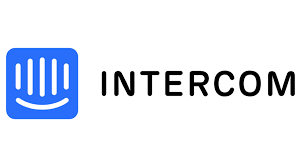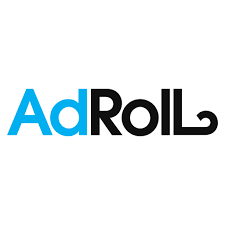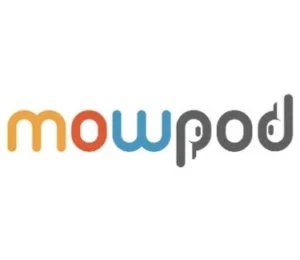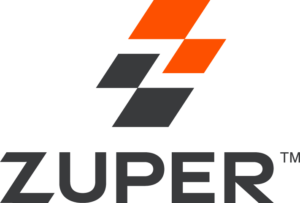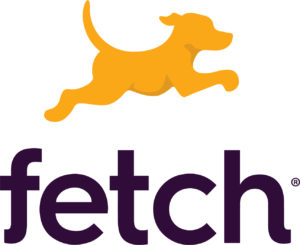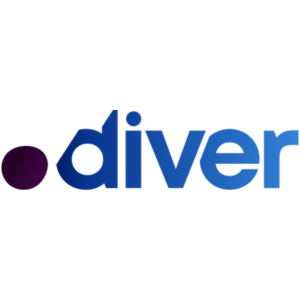LISTEN IN A POD APP
Filters
Vitaly Pecherskiy | StackAdapt
Contextual targeting’s next level — Vitaly Pecherskiy // StackAdapt
Vitaly Pecherskiy, COO at StackAdapt, talks about why digital marketers should adopt programmatic advertising now. While third-party and user-level data have been the go-to for delivering results for marketers, contextual advertising is now emerging as a powerful alternative. By providing precision that is often difficult to achieve through third-party data, contextual advertising offers a valuable…
Play PodcastVitaly Pecherskiy | StackAdapt
Why programmatic is growing? — Vitaly Pecherskiy // StackAdapt
Vitaly Pecherskiy, COO at StackAdapt, talks about why digital marketers should adopt programmatic advertising now. In today’s advertising landscape, programmatic advertising is the standard way in which media is bought and sold. However, programmatic technology is unable to automatically solve the problems of customer acquisition and still requires an understanding of your ideal customer profile…
Play PodcastDavid Finkelstein | BDEX
Understanding Ad Fraud — David Finkelstein // BDEX
David Finkelstein, CEO of BDEX, talks about data and technology. Due to ad fraud generating revenue for publishers and advertising platforms, there has been little incentive to eliminate it for years. However, the demand for better performance from advertisers has forced ad platforms to find ways to reduce ad fraud or face the risk of…
Play PodcastDavid Finkelstein | BDEX
Generative AI’s impact on AdTech — David Finkelstein // BDEX
David Finkelstein, CEO of BDEX, talks about data and technology. While ChatGPT has gained recent attention in the AI industry, many are unaware of the widespread use of AI in adtech. Previously, only large companies like Google, Facebook, and Amazon had the resources to leverage AI for adtech, but now, companies like BDEX are making…
Play PodcastMike Wiston | mowPod
Using Programmatic to build podcast communities — Mike Wiston // mowMedia | mowPod
Mike Wiston, CEO of mowPod, examines whether people should be paying to have downloads of their podcast. Despite the potential for success, audio advertising is often underutilized in the podcast industry due to its complex nature. However, companies like mowPod are making it easier for podcasters to leverage programmatic advertising for podcast growth. Today, Mike…
Play PodcastMike Wiston | mowPod
Should pay for podcast downloads? — Mike Wiston // mowMedia | mowPod
Mike Wiston, CEO of mowPod, examines whether people should be paying to have downloads of their podcast. Paying for podcast downloads can be an effective strategy for reaching specific goals, such as monetization or meeting network requirements. However, without a clear goal in mind, paying for podcast downloads will only result in short-term spikes rather…
Play PodcastDavid Finkelstein | BDEX
Privacy vs Identity Resolution — David Finkelstein // BDEX
David Finkelstein, CEO of BDEX, discusses the overlap of data, privacy, marketing and technology. When most of us get onto a website for the first time, chances are we’re not reading the fine print before opting in to have them track our data. And, though there are a lot of issues around data privacy, in…
Play PodcastDavid Finkelstein | BDEX
Building a Data Tool 101 — David Finkelstein // BDEX
David Finkelstein, CEO of BDEX, discusses the overlap of data, privacy, marketing and technology. Building a data application nowadays is much easier than it was in the past with no code services and other available technology. In fact, building a data tool really boils down to networking to find the resources to manipulate the data…
Play PodcastKumar Doshi | Lucid
Market research’s role in identity resolution — Kumar Doshi // Lucid
Kumar Doshi, senior VP of marketing at Lucid, talks about the technology behind market research. How you do market research has evolved over the years to include targeting. While, before, it was about focus groups simply trying to understand the target. Today, Kumar explains the role of market research in identity resolution.
Play PodcastKumar Doshi | Lucid
Understanding your consumers using research technology — Kumar Doshi // Lucid
Senior VP of marketing at Lucid, Kumar Doshi, continues the conversation about the technology behind market research. Many times, people who want to answer your survey are not necessarily your customers. So to ensure data integrity, you need to be able to narrow down respondents. Today, Kumar discusses how you can understand your consumers using…
Play PodcastAbout Marketing Channel: Programmatic Advertising
What is Programmatic Advertising?
Programmatic advertising relies on technology to sell and buy ad inventory using data-driven and automated processes. Programmatic ads appear in screen ad formats, namely mobile, video, native and display ads. These ads are also known as programmatic media.
Programmatic advertising arose from the early days of the internet, where buying online ad space was a simpler process. Advertisers in this space are known as buyers, and publishers are known as sellers. As the internet exploded in growth, it created a massive oversupply in ad inventory.
Ad networks helped publishers categorize their unsold ad inventory, which made it easier for media planners to access, consume and include them in media campaigns. Ad network business processes created premium and remnant ad inventories. However, publishers experienced difficulties in the selling process as it required managing who was accessing their inventory.
This process led to the emergence of programmatic technology like demand-side and supply-side platforms.
What are Supply-Side Platforms?
SSPs give publishers greater control over their own ad inventory, giving them greater say in how inventory is sold and delivered to ad networks. Publishers are able to maximize their revenue within SSP's bidding environments.
SSPs are also known as yield-optimization platforms, as they help publishers optimize processes by connecting their inventory to multiple ad exchanges.
The main features of supply-side platforms include:
- Trackers - Collects data on target audiences and publisher websites.
- Integrations - SSPs integrate with other AdTech platforms to widely access the selling inventory market to maximize revenue and profits.
- Ad exchanges - Enables publishers to connect to advertisers without needing to connect to external ad exchange databases.
- Reporting - Collects data from tracker integrations, which gives publishers campaign performance insights.
What are Demand-Side Platforms?
Demand-side platforms work with media-buying agencies and advertisers with the ad buying process. It allows media-buying agencies and advertisers to automatically bid on video, display ads, mobile and search ad inventory.
DSPs automatize decision-making processes to enable real-time bidding on ads. A key feature in DSPs is the ability to reach audience segments using DSP targeting features. This makes it easier to access ads from an extensive range of publisher sites.
The main features of demand-side platforms include:
- Ad servers - Tracks impressions and conversion data, which are used to optimize ad campaigns. Security integrations can prevent fraud and detect false inventory.
- Campaign trackers and reporting - Trackers record data on ad effectiveness, documenting impressions, ad viewability, clicks and CTR. All information is presented in DSP dashboards.
- Ad exchange and SSP integration - Grants access to multiple ad exchanges and supply-side platforms. It integrates several platforms to consolidate the ad-buying process, giving advertisers cross-channel reach capabilities.
- User profiling - DSPs record user data over time, creating a user profile. The system assigns particular characteristics based on user behavior and then places them in audience segments. User profiles are useful for ad campaigns and remarketing campaigns.
What is Real-Time Bidding?
Real-time bidding (RTB) is the auction process where ad impressions are viewed, bought and sold. When an advertiser's bid wins at auction, their digital ad is published to the website or publisher's ad space.
Popular ad buying programmatic platforms like supply-side platform and ad exchanges facilitate the programmatic RTB auction process. Static auctions focus on group impressions, allowing only bids for package deals, whereas RTB auctions deal primarily in impression-based bidding.
How Real-Time Bidding Works
- A user triggers an ad request while using an app. The user's information, available ad formats and other distinctions are passed to advertisers.
- Advertisers place bids based on interest and how passed data measures up to their marketing target parameters. As demand increases, so does the price.
- A winning bid is selected and the ad is delivered to the user.
Programmatic Deal Types
RTB is just one approach to programmatic advertising. There are six main types of programmatic deals.
- Open marketplace RTB - Where RTB impressions are available to all participating bidders.
- Private marketplace - PMPs are invite-only marketplaces that enable publishers to set aside particular ad inventory packages to sell to select buyers.
- Private marketplace guaranteed - PMP guaranteed deals involve single premium single publishers who make their inventory and audiences available to just one buyer. It's a guaranteed impression delivery to the buyer.
- Automated guaranteed - RFP and campaign trafficking processes are completely automated. Deals negotiated directly between buyers and sellers are processed by a technology platform. Inventory and pricing are guaranteed in automated processes. It also provides real-time impressions and direct line item insertions.
- Spot buying - All exchanges exist within a pre-negotiated, fixed-pricing environment. Deals in spot buying result from advertiser demand for more predictable programmatic offerings.
- Automated performance - Functions like automated guaranteed, but campaign performance is guaranteed instead of providing impressions. Common performance metrics for this method is cost-per-install (CPI) or cost-per-click (CPC).
Why is Programmatic Advertising Important?
Programmatic advertising technology simplifies the ad-buying process, making it more efficient and cost-effective. Before programmatic advertising, salespeople and media buyers bought and sold digital ads. The old process proved unreliable, time consuming and expensive.
Programmatic advertising platforms automate tasks, improving digital advertising processes overall. Programmatic ads make it possible to send insertion orders to publishers faster.
Key Benefits of Programmatic Advertising
Programmatic marketing and advertising provides a plethora of benefits to marketers and their advertising campaigns.
- Expands reach - Programmatic advertising allows marketers to advertise at scale at affordable prices. Increased access to multiple ad networks and exchanges gives marketers the ability to run ads on thousands of websites at once.
- More targeting opportunities - Programmatic advertising supports advanced targeting tactics like lookalike audiences and interest targeting. These tactics help advertisers reach high-quality audiences on a wide scale.
- Increases relevancy - In programmatic, advertisers are able to maximize ad relevancy for targeted audiences. Access to premium inventory and private ad marketplaces offers a massive marketplace with high-quality traffic to target.
- Better data insights and real-time reporting - Programmatic advertising platforms provide real-time data and advanced reporting on ad performance. Publishers and advertisers use this advantage to quickly optimize digital marketing campaigns and scale accordingly.
How to Apply Programmatic Advertising in the Marketplace
- Understand programmatic terminology and marketplace - Developing a thorough understanding of programmatic terminology and terms is essential before launching programmatic initiatives.
- Set achievable goals - Setting clear, achievable goals using existing data will determine whether programmatic advertising is the right strategy. Use data to determine short and long-term goals.
- Add skilled people - Programmatic algorithms and machines need technical expertise. Businesses need to allocate skilled people who can control, plan and optimize programmatic buying processes. Some programmatic platforms offer fully or half-managed services, which can alleviate the need for programmatic technical knowledge among employees.
- Safeguard the brand - One issue with programmatic display advertising is that ads can appear in the wrong, or unsavory, places. It's important to monitor and update demand-side blacklists to avoid appearing on inappropriate sites. Some platforms offer sweeping exclusion measures to omit your brand from entire categories, which is particularly useful.
- Keep alert for fraud - Fraud is low in programmatic advertising, but it's still important to keep an eye out for threats. Monitoring for programmatic fraud should be an essential task in all campaigns and initiatives.
Programmatic Advertising on Streaming Services
Streaming services are valuable ad space territory. Streaming services like Hulu, Sling and YouTube TV run video ads, which reaches millions of people worldwide. The video-on-demand digital advertising market is exploding in growth and is a valuable space for programmatic marketing to reach mass audiences.
The top streaming platforms are:
- Netflix
- Crunchyroll
- Twitch
- iTunes
- Crackle
- YouTube TV
- Playstation Vue
- Hulu
- Amazon Prime Video
Programmatic advertising is typically available through the streaming service or their programmatic advertising partners. Buying direct guarantees placement but at a premium cost.
Outbidding from competitors is a significant risk. Each streaming service's programmatic buying and bidding processes differ.
Programmatic Buying on Streaming Examples
- Hulu - Direct buying from Hulu results in speaking with their internal sales team to determine ad spend and ad placements. For programmatic buying, Hulu uses their own programmatic partner Telaria.
- IMDb TV - Programmatic buyers have to work with Amazon DSP. Buyers with ad budgets surpassing $30,000 are paired with Amazon Ad Consultants to buy ads. Amazon also maintains a list of trusted partners that understand its platform and requirements.
- Sling - Sling was among the first streaming services to introduce programmatic advertising. Programmatic buyers will work with Adobe's advertising cloud to advertise on Sling. Other advertising options will require buyers to work with Dish Network or its advertising partners.
Best Practices for Ad Buying on Streaming Services
- Understand each streaming service's audience - An important distinction to make is knowing the difference between your ad's audience and the audience of the viewer. The two can differ in age, gender and other distinctions. Knowing factors like ad type and niche will help you better understand the ad space and serve more relevant ads.
- Deliver different types of ads - Switching up ad type niches and finding the right programmatic ad structure provides multiple benefits. Offering diverse ads help create well-rounded advertising campaigns. Finding the right niche for you boils down to testing them on streaming platforms.
- A/B test different ads - A/B testing is essential to delivering the right ad to your target audience. A/B testing is best applied to online streaming service ads due to their short length. Testing small variations to ad copy and structure will convey enough data of which one will outperform the other.
- Include compelling calls-to-action - Call-to-actions must be specific and compelling on streaming TV ads due to its shorter structure. Providing one gives clear direction with an ad, whereas ads without them can make the ad itself or a product appear illegitimate.
- Deliver consistency - Consistently serving proven ads provides the most return with ad budgets. It's best to only change things up when performance begins to lag or another tested ad is performing exceptionally well.
- Implementing retargeting efforts - Retargeting is an often overlooked streaming strategy as it requires more technical knowledge to implement. Taking the time to retarget significantly improves conversion rates, acquires more qualified leads and adds more total net revenue.
- Engage in multi-channel marketing - Connect ads to other marketing channels to reach audiences wherever they are. Display advertising is most effective when viewers have seen it multiple times. A good ad served across multiple channels improves the chances of multiple viewings. Testing is important for multi-channel marketing, as a bad ad served across multiple channels quickly eats up valuable marketing budget.
- Apply budget limits to ad spend - Setting a budget limit to ad spend ensures ad placements are served with a steady cadence. Limits keep campaigns balanced, which keeps digital advertising spend within the requirements of ads to perform.
Read MoreRead Less
Sponsors of the MarTech Podcast




